Optimized Design of Wind Turbine Blade Receptors Based on Electrostatic Field Theory
Abstract
:1. Introduction
2. Experiment
2.1. Lightning Leading Development Mechanism
2.2. Design of Lightning Test Model for Wind Turbine
2.3. Solution of Electric Field Equation of Lightning Discharge
- (1)
- The calculation area is simplified, a reasonable solution area is selected, and the field is divided into several analytical units;
- (2)
- The electric field energy coefficient matrices of some elements are solved;
- (3)
- The total field energy coefficient matrices of some elements are solved;
- (4)
- The potential of each node is solved on the basis of the finite element equation, [K] [] = [B]-[P]. In the formula, [] is the inner node potential column vector, [K] is the coefficient matrix of order n × n, [B] is the column vector of free term, and [P] is the second boundary value column vector;
- (5)
- The other quantities of the electric field are calculated on the basis of the potential of each node.
2.4. Establishment of Simulation Model for Blade Receptors
3. Results and Discussion
Analysis of Simulation Results
4. Conclusions and Discussions
Author Contributions
Funding
Acknowledgments
Conflicts of Interest
References
- Wang, Y.; Wang, J.; Zhou, M.; Liu, Y.; Cai, L.; Xue, J. Lightning Attachment Characteristic of Wind Turbine Blade with Two-receptors. Proc. CSEE 2018, 38, 5307–5308. [Google Scholar]
- Hong, W.P.; Jin, M.L.; Niu, G.Q. Research on shell-side resistance characteristics of small-scale shell-and-tube heat exchangers. Chem. Mach. 2014, 41, 680–682. [Google Scholar]
- Birkl, J.; Diendorfer, G.; Thern, S.; Kolb, J.; Shulzhenko, E.; Rock, M. Initial investigation of influence of wind farms to lightning events. In Proceedings of the IEEE 33rd International Conference on Lightning Protection, Estoril, Portugal, 25–30 September 2016; pp. 25–30. [Google Scholar]
- Yokoyama, S.; Yasuda, Y.; Minowa, M.; Sekioka, S.; Yamamoto, K.; Honjo, N.; Sato, T. Clarification of the mechanism of wind turbine blade damage taking lightning characteristics into consideration and relevant research project. In Proceedings of the International Conference on Lightning Protection, ICLP, Vienna, Austria, 2–7 September 2012. [Google Scholar]
- Minowa, M.; Kunimatsu, T.; Yoda, M. Observation of lightning discharge to a wind power station at Hokuriku areas in 2013 winter season. In Proceedings of the Asia-Pacific International Conference on Lightning, APL, Nagoya, Japan, 23–27 June 2015; pp. 1–3. [Google Scholar]
- Garolera, A.C.; Madsen, S.F.; Nissim, M.; Myers, J.D.; Holboell, J. Lightning damage to wind turbine blades from wind farms in USA. IEEE Trans. Power Deliv. 2016, 31, 1043–1049. [Google Scholar] [CrossRef]
- Huang, J. The lightning system analysis and design of high-power wind turbine blades. Wind Power 2012, 5, 82–85. [Google Scholar]
- Xiang, X.; Xiaoqing, Z.; Cong, L. Simulation analysis on overvoltage in wind turbines by lightning stroke. Trans. China Electrotech. Soc. 2015, 30, 237–244. [Google Scholar]
- DNV. Design of Offshore Wind Turbine Structures; Offshore Standard (DNV-OS-J101); Det Norske Veritas: Oslo, Norway, 2007. [Google Scholar]
- Zhang, B.; Xue, H.; Zhang, B.; Zong, C.; Fan, Z. Influence of the wind vane tower barrel on the earthling connection’s impulse earthling characteristics in a lightning shock. High. Volt. Eng. 2012, 38, 2675–2682. [Google Scholar]
- Qibin, Z.; Canxiang, L.; Yu, C.; Xiaoyan, B.; Yang, Z. Shanghai Lightning Protection Center. Numerical simulation and protection of wind turbine blade lightning attachment zones. High Voltage Eng. 2017, 43, 2739–2745. [Google Scholar]
- Qu, L.; Wen, X.; Wang, Y.; SI, T.; Ma, Y.; Lan, L. Experimental study on the influence of the air terminal on triggered lightning ability of rotation wind turbine. High Voltage Eng. 2017, 43, 1628–1634. [Google Scholar]
- Fang, C.Y.; Li, J.T.; Zhang, Z.; Wen, X.; Wang, Y. Experimental study of the influence of the grounding resistance on triggered lightning abilities of wind turbine’s flabellum. Power Syst. Technol. 2015, 39, 1709–1713. [Google Scholar]
- Abd-Elhady, A.M.; Sabiha, N.A.; Izzularab, M.A. Experimental evaluation of air-termination systems for wind turbine blades. Electr. Power Syst. Res. 2014, 107, 133–143. [Google Scholar] [CrossRef]
- Ma, Y.; Zhang, L.; Yan, J.; Guo, Z.; Li, Q.; Fang, Z.; Siew, W.H. Inception mechanism of lightning upward leader from the wind turbine blade and a proposed critical length criterion. Proc. CSEE 2016, 36, 5975–5982. [Google Scholar]
- Holbøll, J.; Madsen, S.F.; Henriksen, M.; Bertelsen, K.; Erichsen, H.V. Discharge phenomena in the tip area of wind turbine blades and their dependency on material and environmental conditions. In Proceedings of the International Conference on Lightning Protection, ICLP, Kanazawa, Japan, 18–22 September 2006. [Google Scholar]
- Miki, M.; Miki, T.; Shindo, T.; Asuka, Y.; Honjo, N. Multi ground termination upward flash in winter lightning at the coastal area of the sea of Japan. In Proceedings of the International Conference on Lightning Protection, ICLP, Vienna, Austria, 2–7 September 2012. [Google Scholar]
- Cummins, K.L.; Qucik, M.G.; Rison, W.; Krehbiel, P.; Thomas, R.; Mcharg, G.; Engle, J.; Myers, J.; Nag, A.; Cramer, J.; et al. Overview of the Kansas Wind farm 2013 field program. In Proceedings of the International Conference on Atmospheric Electricity, Norman, OK, USA, 15–20 June 2014; pp. 1–16. [Google Scholar]
- Cotton, I.; Jenkins, N.; Pandiaraj, K. Lightning protection for wind turbine blades and bearings. Wind Energy 2001, 4, 23–37. [Google Scholar] [CrossRef]
- Lu, W.; Wang, D.; Zhang, Y.; Takagi, N. Two associated upward lightning flashes that produced opposite polarity electric field changes. Geophys. Res. Lett. 2009, 36, 277–291. [Google Scholar] [CrossRef]
- Honjo, N. Risk and its reduction measure for wind turbine against the winter lightning. In Proceedings of the Asia-Pacific International Conference on Lightning, APL, Nagoya, Japan, 23–27 June 2015. [Google Scholar]
- Garolera, A.C.; Cummins, K.L.; Madsen, S.F.; Holboell, J.; Myers, J.D. Multiple Lightning Discharges in Wind Turbines Associated With Nearby Cloud-to-Ground Lightning. IEEE Trans. Sustain. Energy 2015, 6, 526–533. [Google Scholar] [CrossRef]
- Ni, G. Principle of Engineering Electromagnetic Field; High Education Press: Beijing, China, 2009; pp. 103–107. [Google Scholar]
- Yasuda, Y.; Yokoyama, S.; Minowa, M.; Satoh, T. Classification of lightning damage to wind turbine blades. IEEJ Trans. Electr. Electron. Eng. 2012, 7, 559–566. [Google Scholar] [CrossRef]
- IEC. Wind Turbines, Part 24: Lightning Protection; IEC 61400-24:2010; IEC: Geneva, Switzerland, 2010. [Google Scholar]
- Zhao, Z. High Voltage Technique, 3rd ed; China Electric Power Press: Beijing, China, 2013; pp. 37–38. [Google Scholar]
- Hu, J.L.; Chuan, H.; Du, L. Simulation study on electric field of a long rod-plane air gap during leader discharge based on weak form of finite element method. Proc. CSEE 2008, 28, 148–154. [Google Scholar]
- Xie, S.; He, J.; Chen, W.; Chen, J.; He, H.; Gu, S.; Qian, G.; Xiang, N. Simulation study on the development process of the upward leader incepted from lightning rod. Proc. CSEE 2012, 32, 32–40. [Google Scholar]
- Chen, W.; He, H.; Qian, G.; Chen, J.; He, J.; Gu, S.; Xie, S.; Xiang, N. Review of the lightning shielding against direct lightning strokes based on laboratory long air gap discharges. Proc. CSEE 2012, 32, 1–12. [Google Scholar]
- Li, H. Study on the Similarity Criteria and Simulation Method of the Wind Tunnel Based Virtual Flight Testing; China Aerodynamics Research and Development Center: Mianyang, China, 2012; pp. 4–6. [Google Scholar]
- Madsen, S.F.; Holboell, J.; Henriksen, M.; Larsen, F.M.; Hansen, L.B.; Bertelsen, K. Breakdown tests of glass fibre reinforced polymers (GFRP) as part of improved lightning protection of wind turbine blades. In Proceedings of the Conference Record of the IEEE International Symposium on Electrical Insulation, Indianapolis, IN, USA, 19–22 September 2004. [Google Scholar]
- Dhanya, T.M.; Yerramalli, C.S. Lightning strike effect on carbon fiber reinforced composites—Effect of copper mesh protection. Mater. Today Commun. 2018, 16, 124–134. [Google Scholar] [CrossRef]
- Karegar, H.K.; Bagherian, H. Effects of Location, Size and Number of Wind Turbine Receptors on Blade Lightning Protection. Autom. Electr. Power Syst. 2012, 36, 122–127. [Google Scholar]
- Fisher, F.A.; Plumer, J.A.; Perala, R.A. Lightning Protection of Aircraft, 2nd ed.; Lightning Technologies Inc.: Pittsfield, MA, USA, 2004. [Google Scholar]
- Gewehr, H.W. Lightning Protection for Composite Rotor Blades. In Proceedings of the National Conference, Pittsburgh, PA, USA, 8–11 June 1980; American Wind Energy Association: Washington, DC, USA, 1980. [Google Scholar]
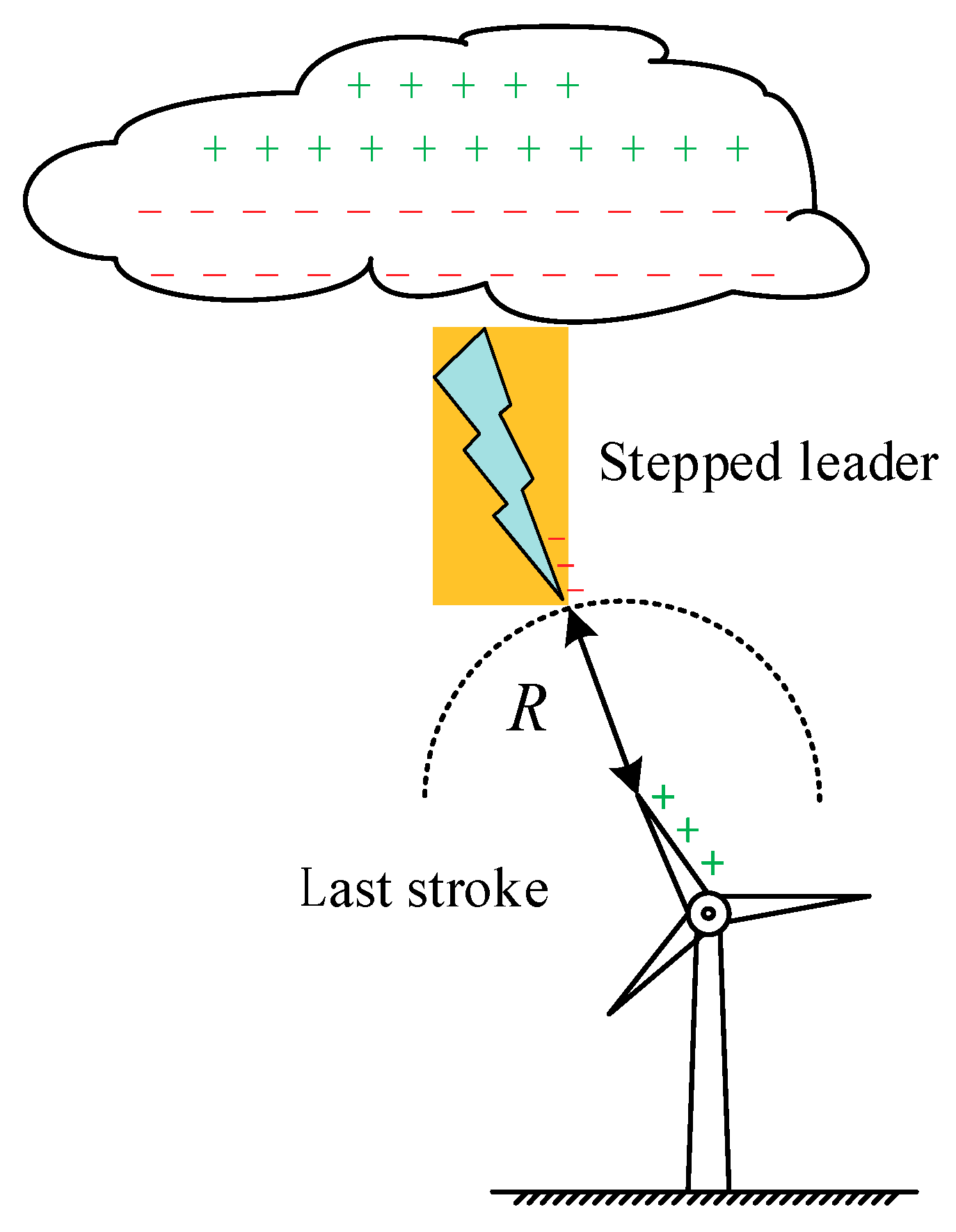

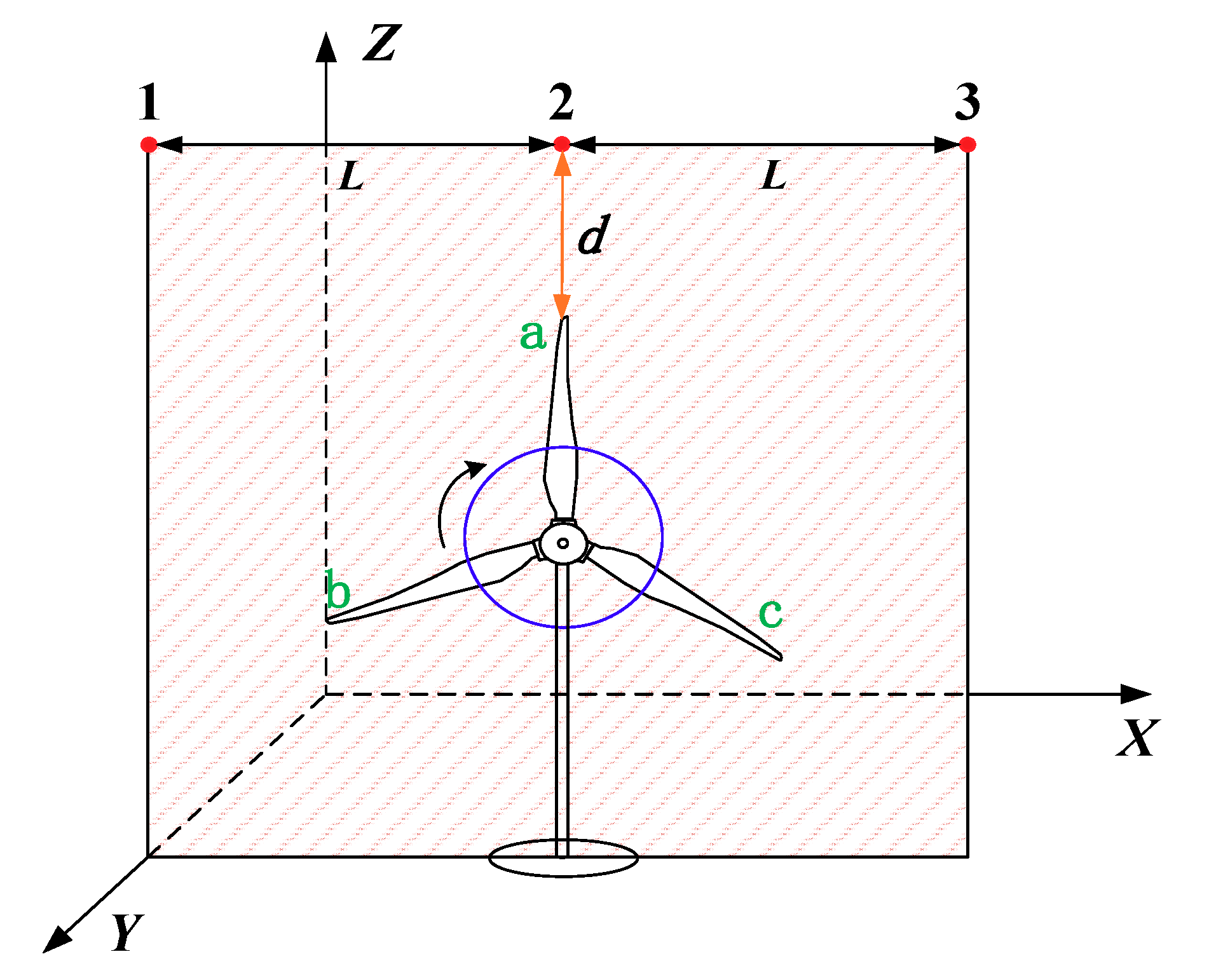

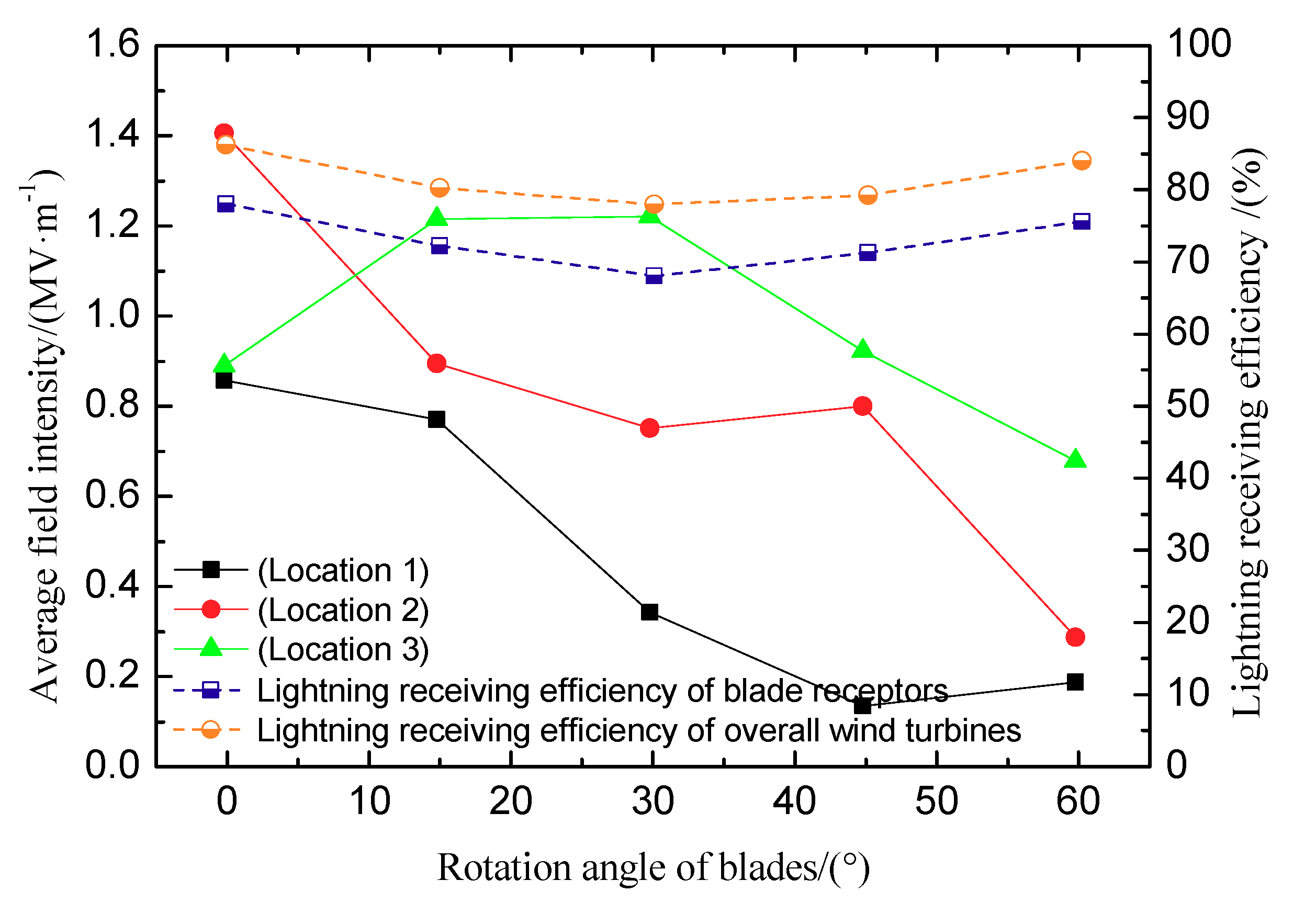
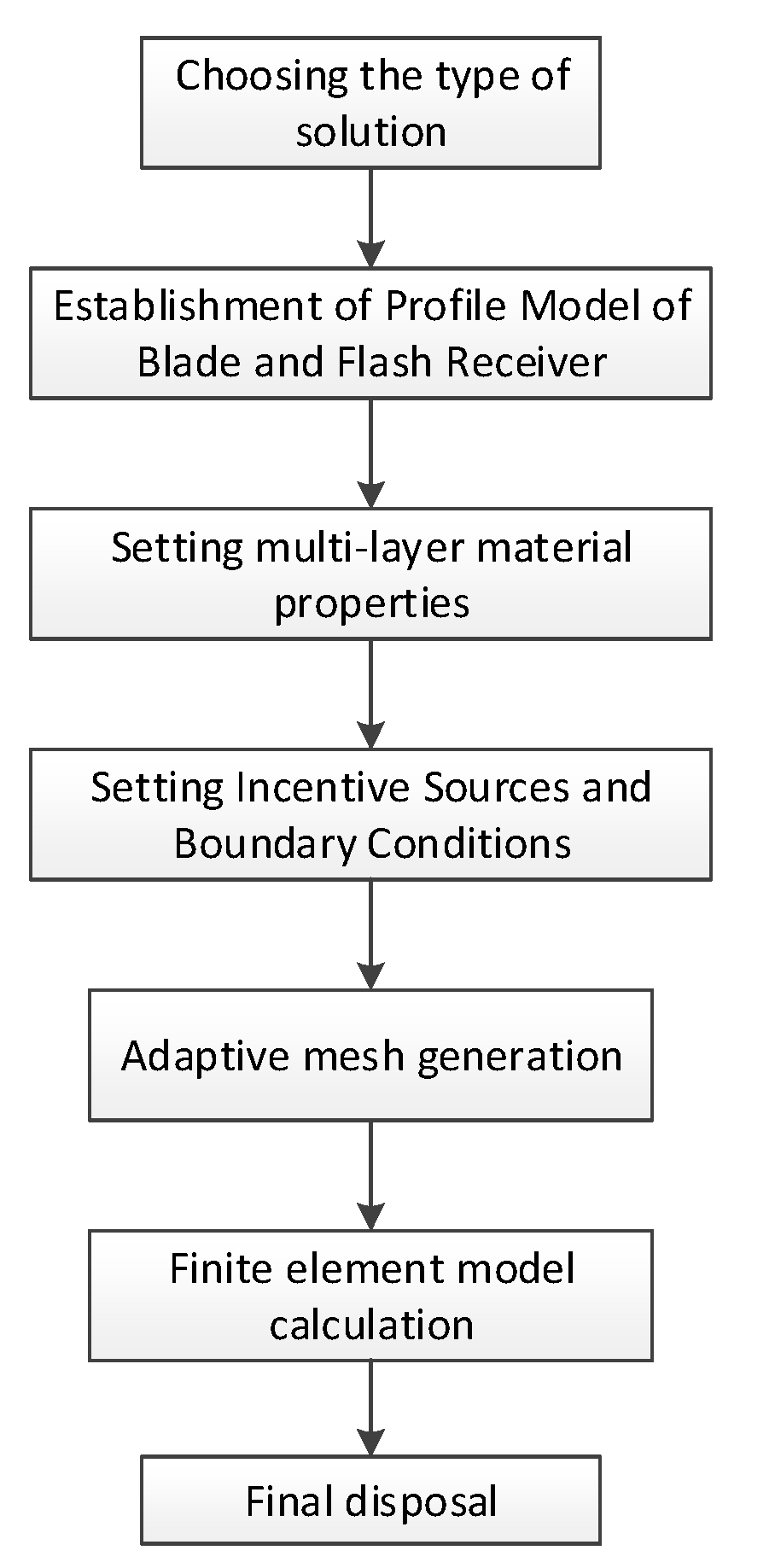
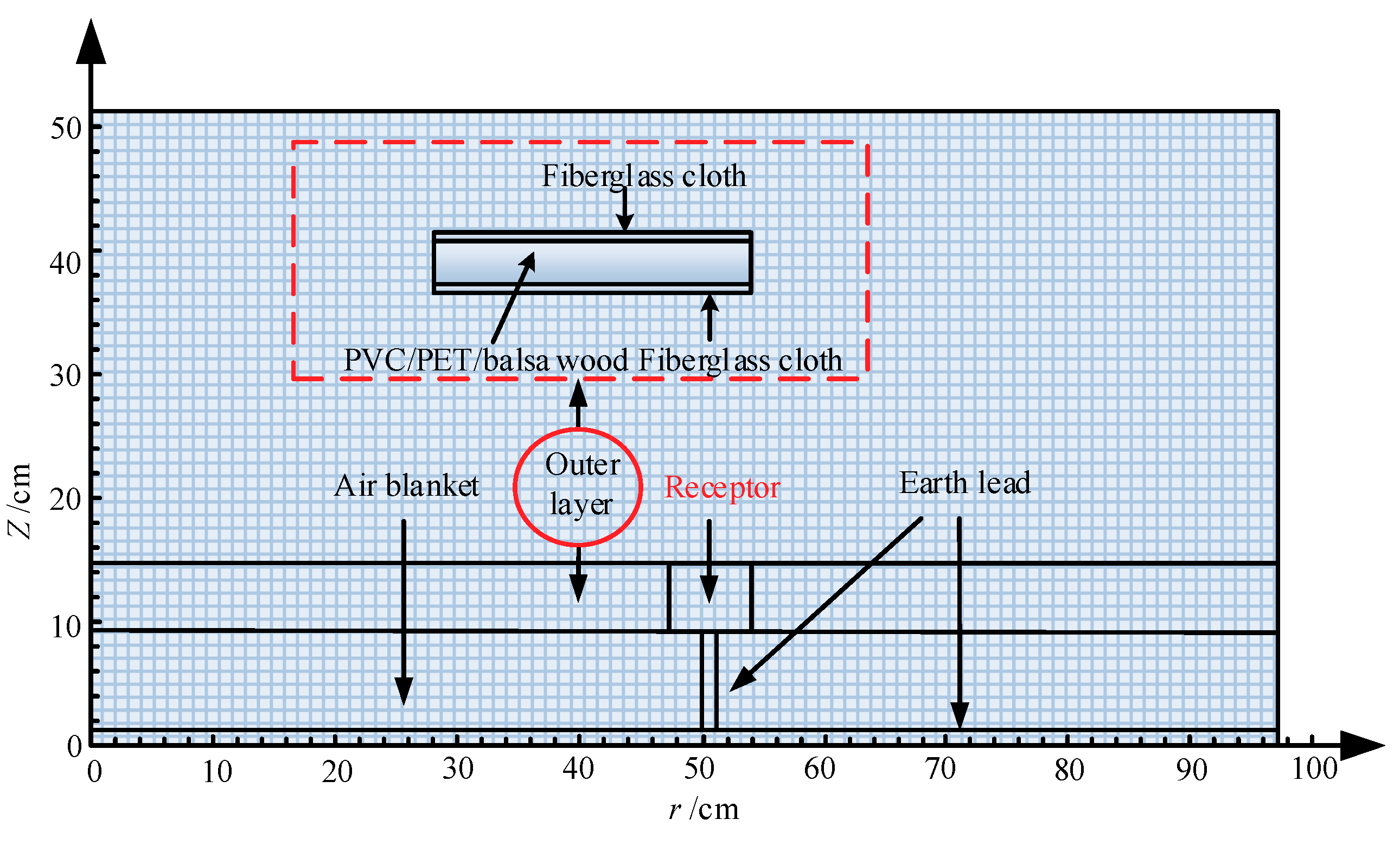
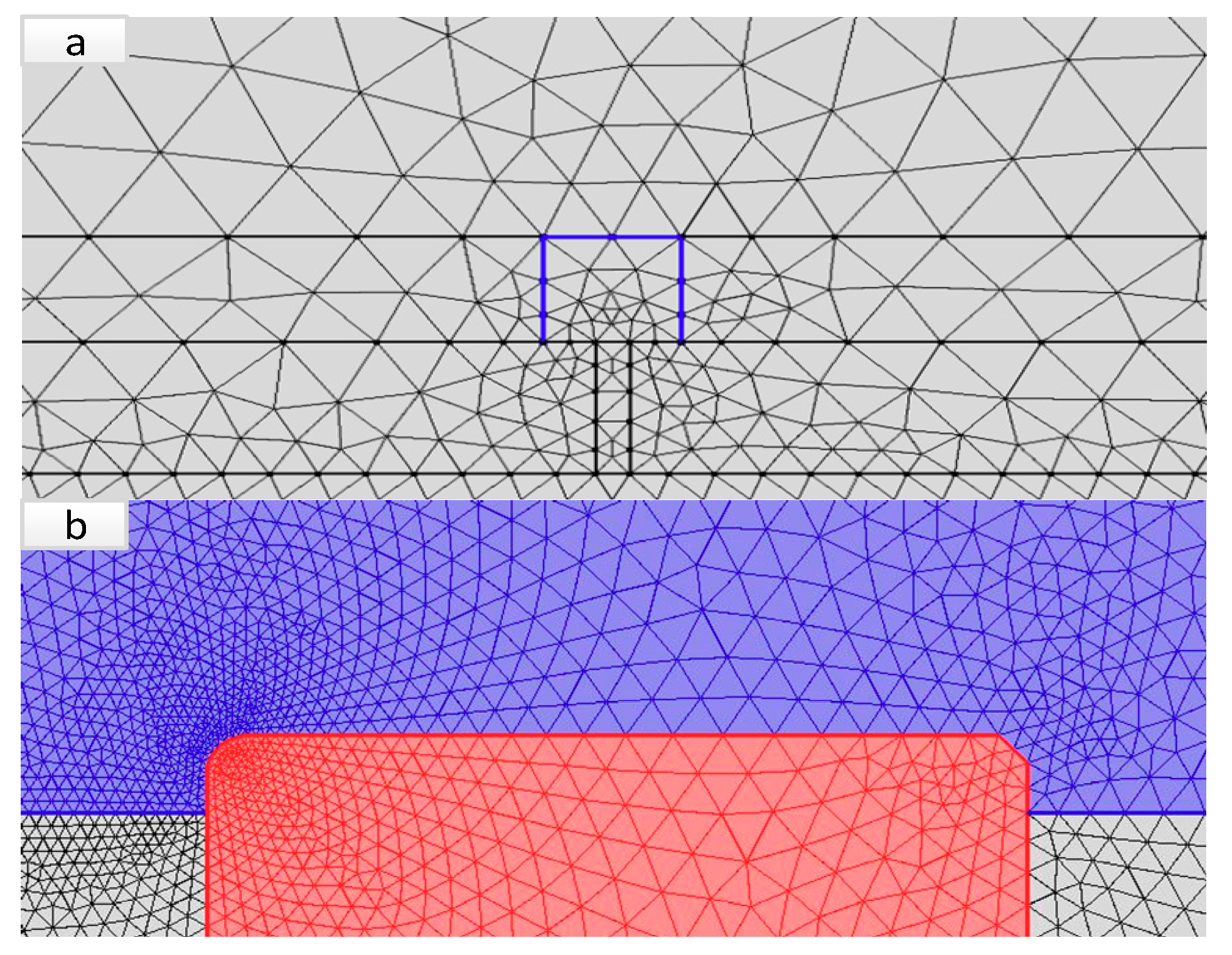

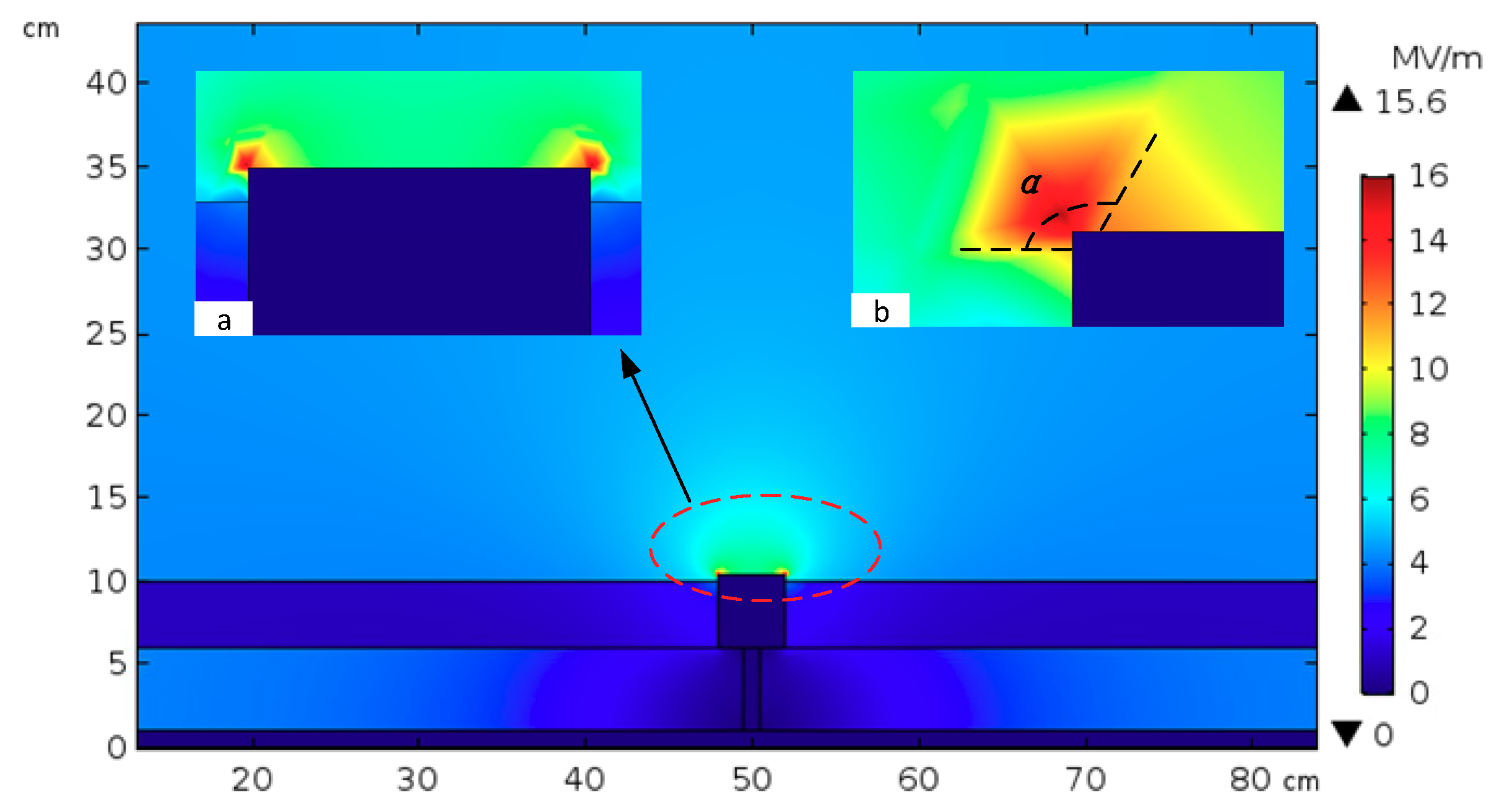
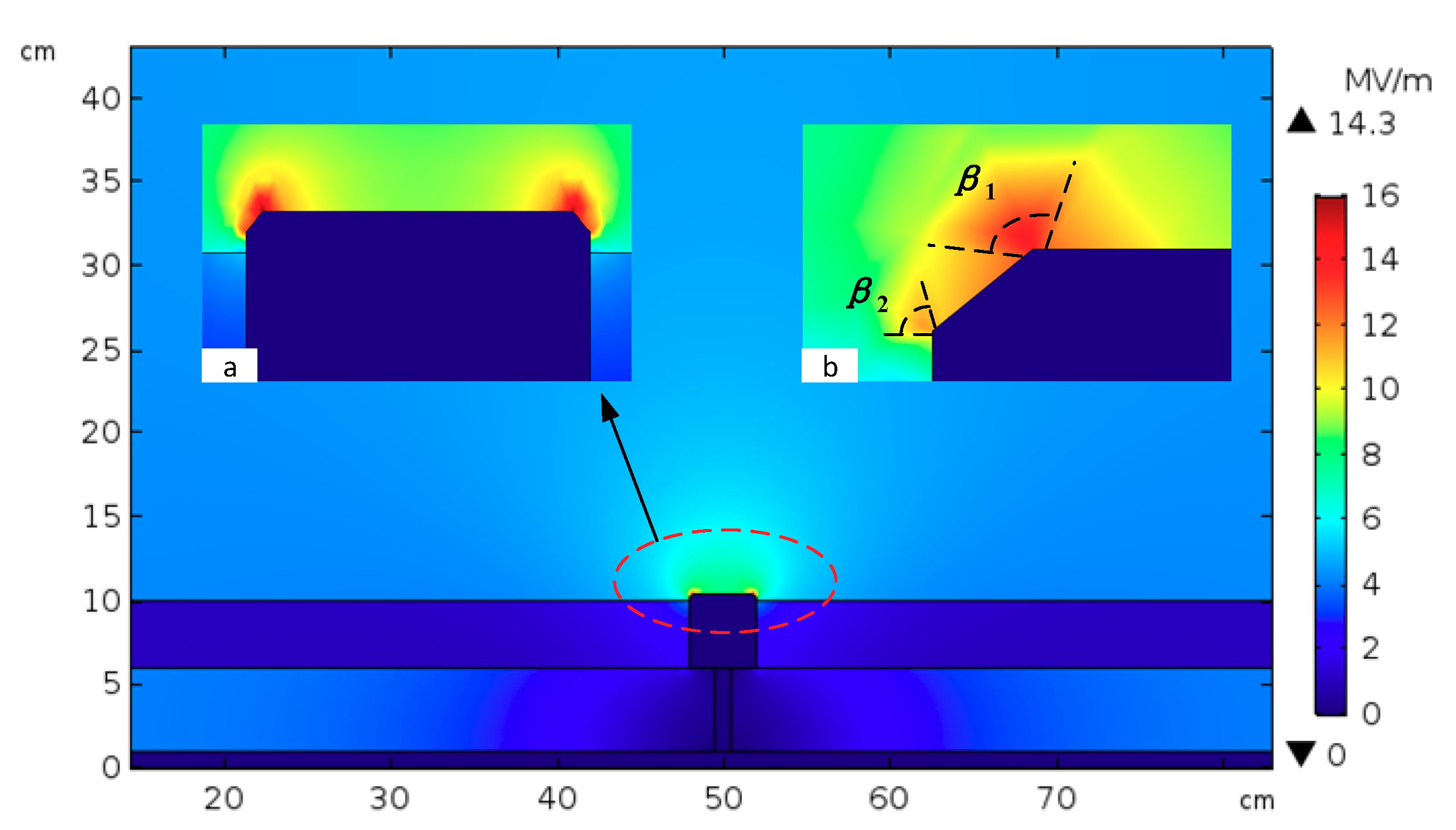
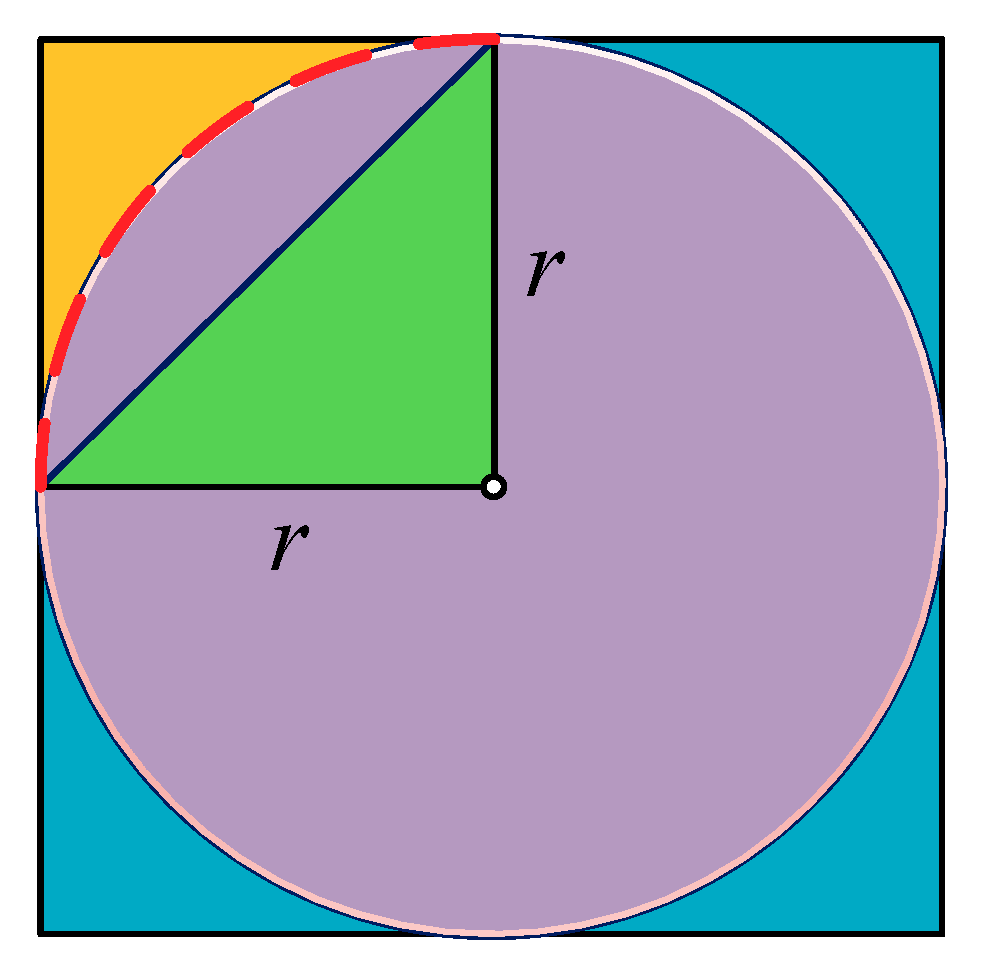
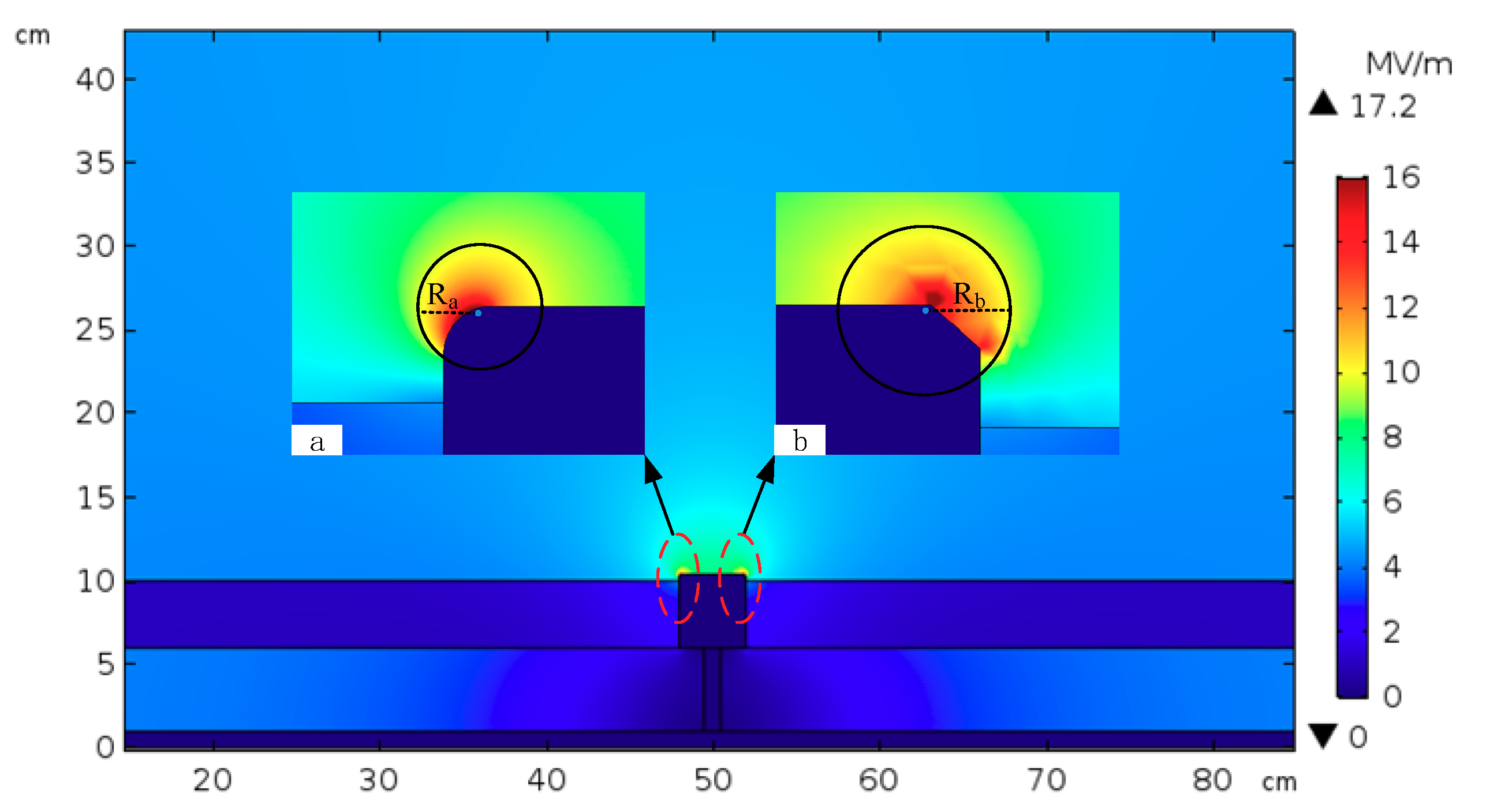
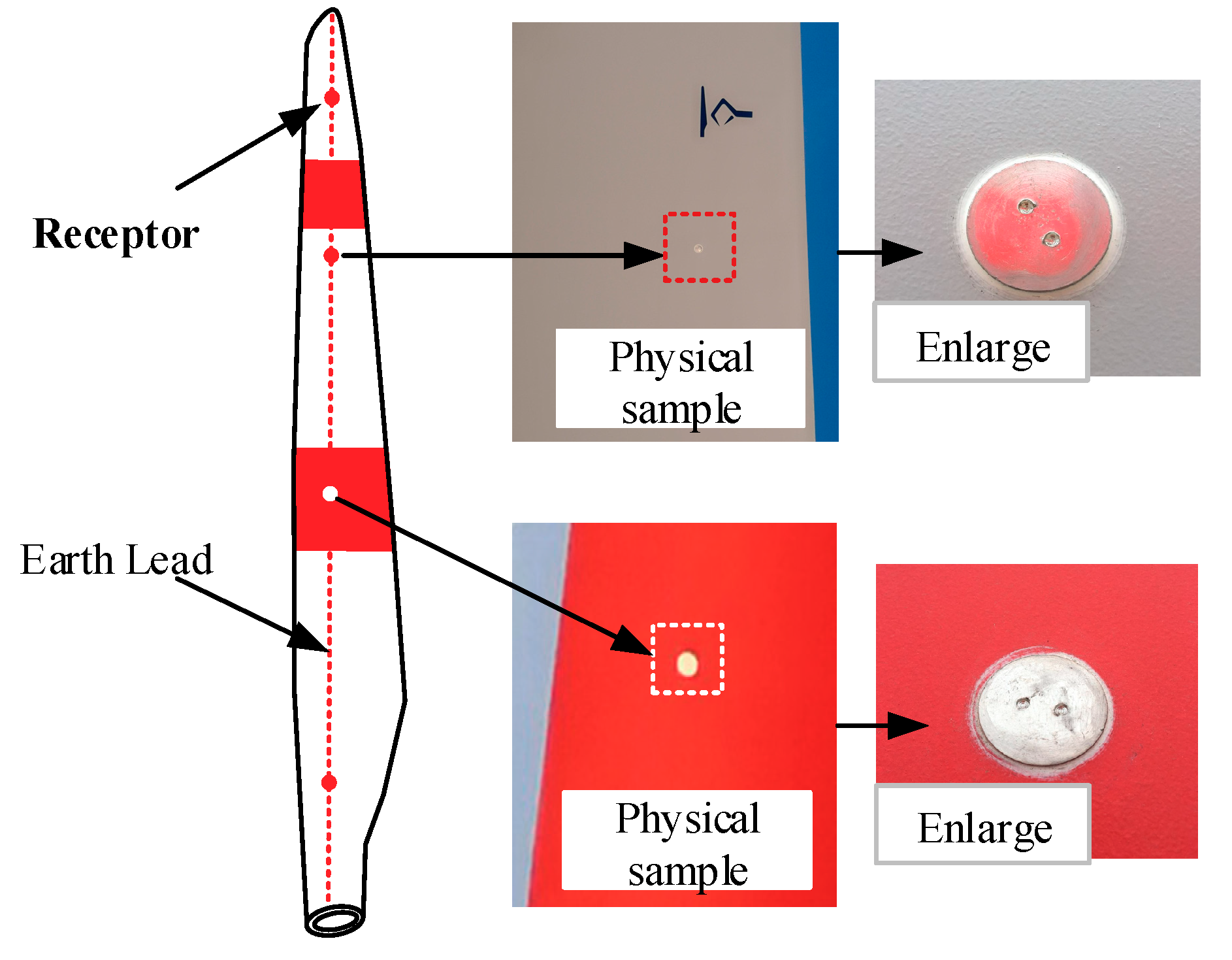
© 2019 by the authors. Licensee MDPI, Basel, Switzerland. This article is an open access article distributed under the terms and conditions of the Creative Commons Attribution (CC BY) license (http://creativecommons.org/licenses/by/4.0/).
Share and Cite
Li, P.; Lv, D.; Li, C.; Yue, X.; Cao, H. Optimized Design of Wind Turbine Blade Receptors Based on Electrostatic Field Theory. Electronics 2019, 8, 1418. https://doi.org/10.3390/electronics8121418
Li P, Lv D, Li C, Yue X, Cao H. Optimized Design of Wind Turbine Blade Receptors Based on Electrostatic Field Theory. Electronics. 2019; 8(12):1418. https://doi.org/10.3390/electronics8121418
Chicago/Turabian StyleLi, Pengfei, Dongbo Lv, Chengwei Li, Xianjie Yue, and Hongliang Cao. 2019. "Optimized Design of Wind Turbine Blade Receptors Based on Electrostatic Field Theory" Electronics 8, no. 12: 1418. https://doi.org/10.3390/electronics8121418
APA StyleLi, P., Lv, D., Li, C., Yue, X., & Cao, H. (2019). Optimized Design of Wind Turbine Blade Receptors Based on Electrostatic Field Theory. Electronics, 8(12), 1418. https://doi.org/10.3390/electronics8121418




